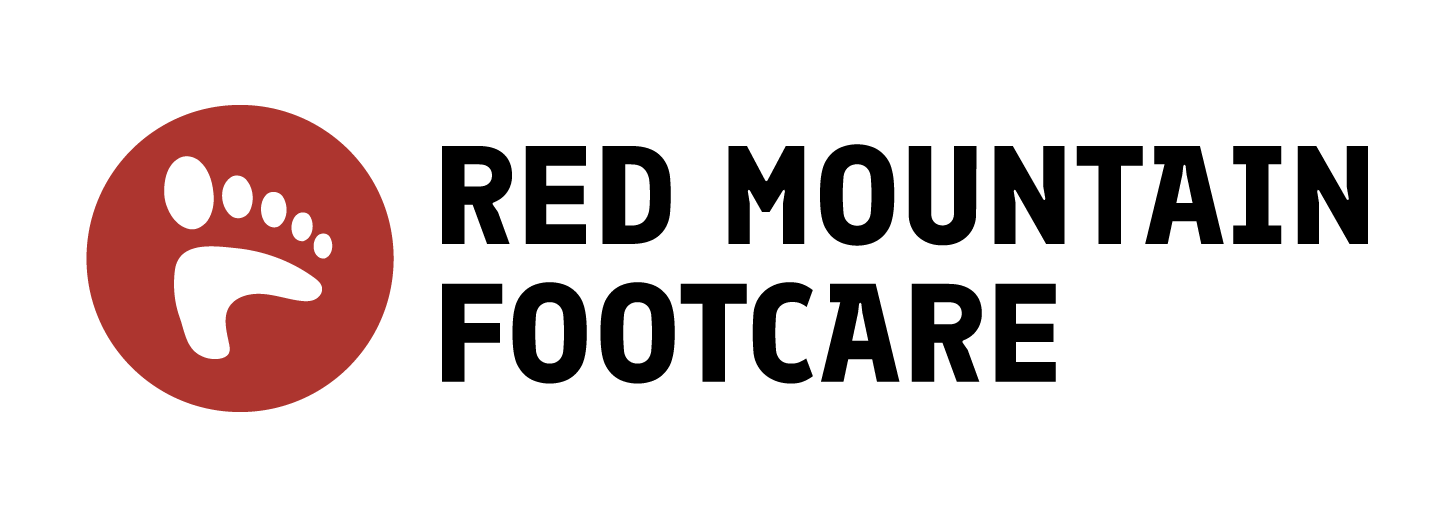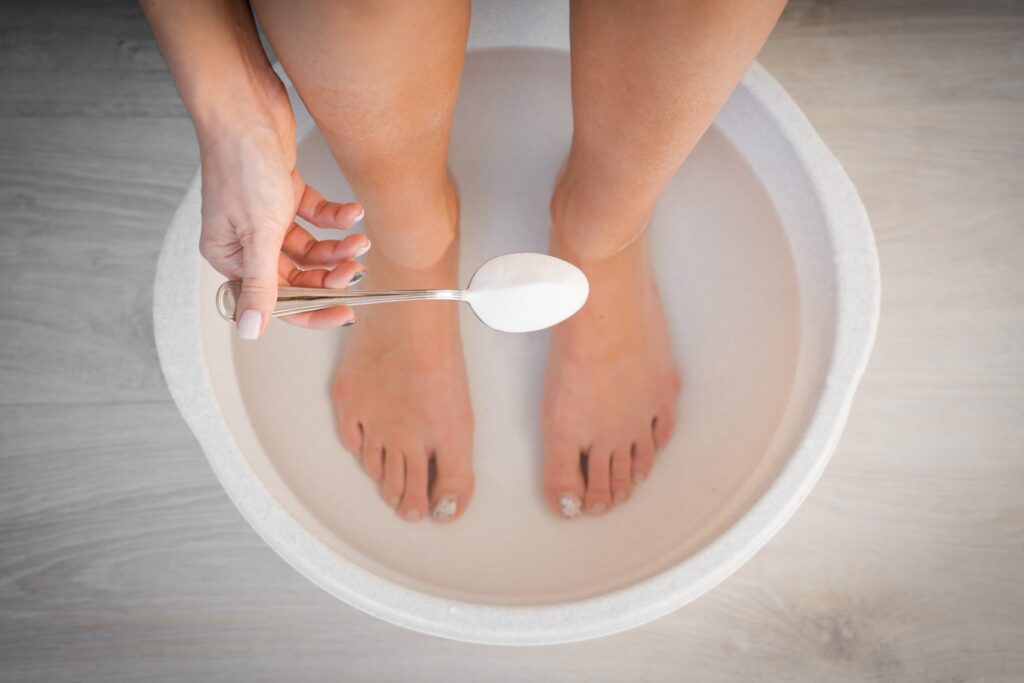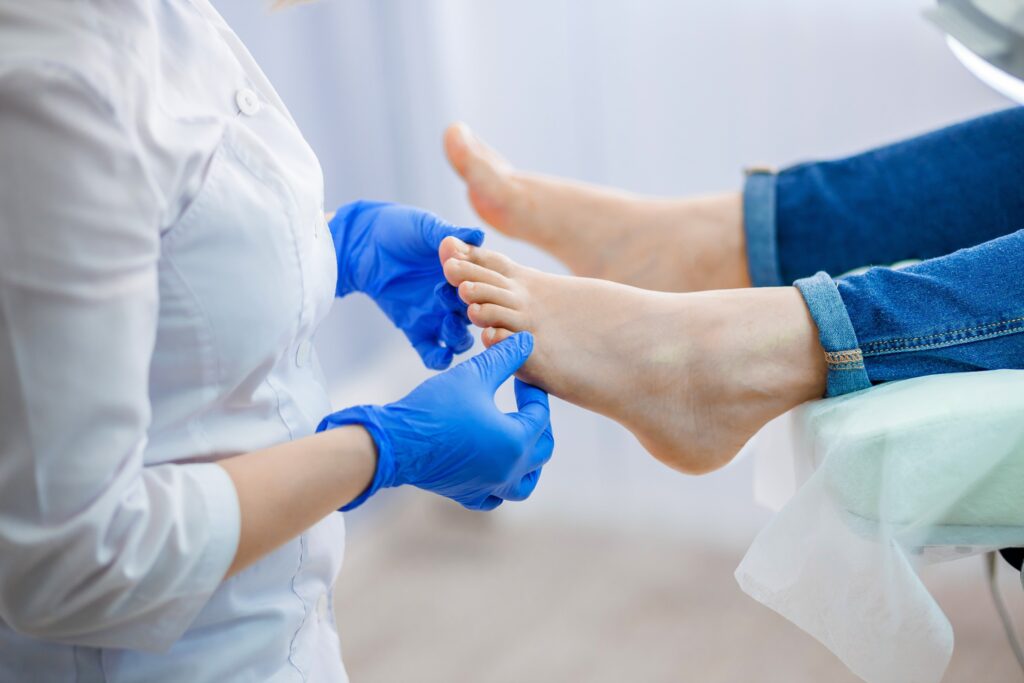What to Do if the Side of Your Toenail Hurts But Is Not Ingrown

Many people assume that pain near the side of a toenail must mean it’s ingrown, but this isn’t always the case. At Red Mountain Footcare, we regularly see patients with similar symptoms caused by a range of issues unrelated to ingrown toenails.
Let’s break down the real reasons behind toenail pain and what you can do to find relief.
Common Causes of Pain on the Side of Your Toenail
1. Toenail Trauma
A minor injury (like stubbing your toe, dropping something heavy, or repeated rubbing from tight shoes) can cause nail bed pain and soreness along the sides of your nail. Even if the damage isn’t visible, inflammation under the surface can create persistent discomfort.
2. Fungal Infections
Fungi thrives in warm, moist environments and can sneak under the nail, causing it to thicken, discolor, or crumble. This pressure from underneath may result in pain next to the toenail. Left untreated, fungal infections can lead to long-term irritation.
3. Paronychia (Infection Around the Nail)
This skin infection affects the fold around the nail, and is often triggered by bacteria or fungi entering through a small opening in the skin, like a paper cut or a hangnail. Paronychia can lead to redness, swelling, and pain in the side of the toenail, sometimes accompanied by pus.
4. Psoriasis or Eczema
Chronic skin conditions like psoriasis or eczema can also affect toenails, leading to brittleness, discoloration, or flaking skin around the nail. These conditions may cause the surrounding skin to crack, swell, itch, or feel tender.
5. Improper Nail Trimming
Cutting toenails too short or rounding the edges of the nail can irritate the nearby skin and make it more prone to inflammation or micro-injuries. This may lead to pain on the side of the nail without any actual ingrowth.
Symptoms to Watch For
If your toenail is hurting but doesn’t appear to be ingrown, it’s still important to monitor your symptoms closely. Certain signs can indicate an underlying issue that needs medical attention.
If you notice the following symptoms, reach out to a healthcare professional for evaluation and treatment:
- Persistent soreness or pressure near the nail edge
- Red, swollen skin around the nail fold
- Changes in nail color or thickness
- Discomfort when wearing shoes or walking
When one or more of these symptoms occur, you may be experiencing an infection, nail trauma, or a skin condition requiring medical attention. Catching and addressing these symptoms early can help you avoid complications.
At-Home Remedies for Mild Toenail Pain
In cases where your toenail pain is mild and there are no signs of infection, you may be able to manage the discomfort with simple remedies at home. Try these home remedies to ease pain and soreness:
- Warm saltwater soaks to reduce swelling and cleanse the area
- Topical antifungal or antibacterial ointments
- Wearing open-toed or roomy shoes to reduce pressure
- Cold compresses to minimize inflammation
Remember, these remedies are intended for short-term relief. If the pain continues or worsens, it’s important to seek professional care.
When to See a Podiatrist
While home care can help with minor cases, certain symptoms require the expertise of a podiatrist. Prompt attention is especially important if there’s a risk of infection or if you have a preexisting condition like diabetes.
Contact Red Mountain Footcare if you experience any of the following:
- Pain that lasts for more than a few days
- Pus, intense redness, or swelling
- Change in shape or loosening of the nail
If you have diabetes or other conditions that affect healing, it’s also important to seek medical attention right away. Getting professional help ensures proper diagnosis and effective treatment to prevent further issues.
How to Prevent Pain on the Side or Corner of Your Toenail
Proper foot care plays a big role in keeping your toenails healthy and pain-free. Taking care of your feet and nails with a few simple practices can significantly reduce your chances of developing irritation or infection.
Keep these tips in mind for healthy feet:
- Trim toenails straight across, not curved
- Avoid cutting them too short
- Keep feet clean and dry
- Wear well-fitted shoes that don’t crowd the toes
- Treat fungal infections promptly
Good foot hygiene, smart grooming habits, and proper footwear go a long way in protecting your toes from avoidable pain.
Final Thoughts
Experiencing pain on the side of your toenail but no sign of it being ingrown? It’s more common than you think, and there’s no need to suffer in silence. Whether it’s due to trauma, infection, or another condition, the team at Red Mountain Footcare is here to help.
Let us pinpoint the cause and help you get back on your feet—comfortably.


